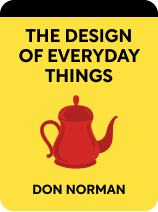

This article is an excerpt from the Shortform book guide to "The Design of Everyday Things" by Don Norman. Shortform has the world's best summaries and analyses of books you should be reading.
Like this article? Sign up for a free trial here .
What are the stages of design? How do these stages incorporate design thinking?
The stages of design go from the ideation stage to prototyping and testing. Each of the stages is important to creating a good design.
Read more about the stages of design and how they work.
Stages of Design: The Cycle of Iteration
The double diamond model is a helpful conceptual overview of the process of design thinking, but it doesn’t give us much practical guidance for how to go about that process. In practice, there are four main tasks of design thinking: observation, idea generation, prototyping, and testing. These are the stages of design. This process is iterative, so it continuously repeats itself until the final product is developed. Human needs are complicated, so it’s hard to get any design right on the first try. Even defining the problem correctly can be difficult, since people’s observed behavior is often very different from their self report of the same behavior.
An iterative design process conflicts with traditional product development mindsets that avoid failure at any cost. Instead, iterative design is designed to produce failure as often as possible, since failure gives designers valuable feedback about what needs fixing. A popular mantra at IDEO, one of the most influential design firms in the world, is “fail frequently, fail fast.”
Observation
The first step in the stages of design is addressing any design problem is observation. The most useful observation for design teams takes place in the real world, not in a controlled setting like a lab. One way to do this is through applied ethnography, which involves observing users in their usual environments, carrying out everyday activities, for as long as possible. This gives the designer the most comprehensive picture of users’ needs and expectations. Applied ethnography is based on techniques of academic anthropology but has been adapted to be much faster and have a more specific aim.
It’s important that the people being observed are part of the intended audience for the final product. The nature of the product determines the type of approach designers take to choosing people to observe. Activity-based approaches are useful for products that are used in more or less the same way, regardless of cultural differences (like cars, computers, and phones). At first, this may seem like a contrast to human-centered design, since the focus is no longer on individual users. But activity-based design is ultimately a tool of human-centered design, since it focuses on helping the user create a working conceptual model.
- For example, driving a car is a complex activity that requires operating multiple systems at the same time (like working the pedals while also steering, checking the mirrors, and following traffic laws). This makes learning to drive difficult, but the fact that each of those tasks serves the broader activity of “driving” makes them easier to learn than they would be in isolation. The activity helps us make sense of disconnected components.
It’s important to distinguish activities from tasks. In the example above, “driving” is the activity, but “steering” and “checking mirrors” are tasks that serve that activity. This distinction relates to the goal of each action: Activities relate to “be-goals,” or goals that relate to our choice and self-image, while tasks are “do-goals,” or simple steps that only matter because they are part of a higher level activity.
When the product is culturally specific or meant to indicate status within a particular group, a culture-based approach to observation can be useful. This is especially true for products like eating utensils and clothing. This type of observation is best done in person, with native members of the particular culture in their local environment. This is the only way to get a true sense of how and where the product will be used.
Design Research Is Not the Same as Market Research
The process of observing people to figure out how they might use a certain product might remind you of market research. The two processes are similar, but have fundamentally different aims. Designers want to know what people need and how they might use certain products, while marketers want to know which groups of people are most likely to buy the product.
Another difference in the two disciplines is breadth versus depth. Market researchers typically survey as many people as possible. They are interested in averages, not specifics, and typically use quantitative data collection methods.In contrast, designer researchers typically study far fewer people in much greater depth, often observing one person for hours or even days. Their methods are qualitative and are useful for uncovering specific needs and problems rather than averages.
A successful product is both well-designed and well-marketed. Without a solid marketing strategy, even the best product will fail, since users can’t appreciate the design if they’re never enticed to buy the product in the first place. Without quality design, even the best marketing strategy only goes so far, since users are unlikely to become repeat customers if the product design is clunky and confusing.
Idea generation
Observation provides the necessary background knowledge to both discover and define the problem. The first step to exploring solutions is idea generation. There are three rules for successfully generating ideas.
- First, focus on quantity over quality. Generating as many ideas as possible increases the odds that at least one of them will be useful.
- Second, don’t censor yourself. Don’t kill ideas before they have a chance to make the list. Even “silly” ideas can spark useful discussion.
- Third, question everything, especially the obvious. Asking “obvious” questions allows the opportunity to reexamine basic ideas, which often leads to the most revolutionary new designs.
Prototyping
The next step in the stages of design is to explore the most promising ideas in more detail. This is done through rapid prototyping, which focuses on creating very rough models of several ideas instead of a more accurate model of one specific idea. Rapid prototyping can happen through sketches, cardboard models, arrangements of sticky notes, spreadsheets, or even skits. More detailed prototypes can be tested once the list has been narrowed down to one or two ideas.
The “Wizard of Oz technique” can be helpful for testing early prototypes. Just like the wizard in the classic story uses smoke and mirrors to make himself appear larger and more powerful, designers can create a facade that mimics the experience of the final design (for example, by having a research assistant play the part of a future computer program and supply answers in an “automated” chat with users).
Testing
Last in the stages of design is testing. Once the team has narrowed the list of possible solutions to one idea and developed that idea into a more sophisticated prototype, it’s time for the testing phase. This begins with bringing in members from the target user group (usually five is enough) and having them use the product how they normally would.
If the product is meant to be used by just one person, it’s useful to put them in pairs, with one using the prototype directly and the other offering suggestions, commentary, and questions. This requires users to talk through their thought processes out loud, which is helpful for designers observing the testing session.
Testing only five people might seem small, but keep in mind that testing is part of an iterative process. After the first testing session, designers will use the feedback from the first five users to tweak the design of the prototype. Then, a new set of five potential users will be tested with this iteration. This method allows for continuous feedback on increasingly successful iterations, rather than testing a large group just once and hoping the changes made as a result will be successful.

———End of Preview———
Like what you just read? Read the rest of the world's best book summary and analysis of Don Norman's "The Design of Everyday Things" at Shortform .
Here's what you'll find in our full The Design of Everyday Things summary :
- How psychology plays a part in the design of objects you encounter daily
- Why pushing a door that was meant to be pulled isn't your fault
- How bad design leads to more human errors






